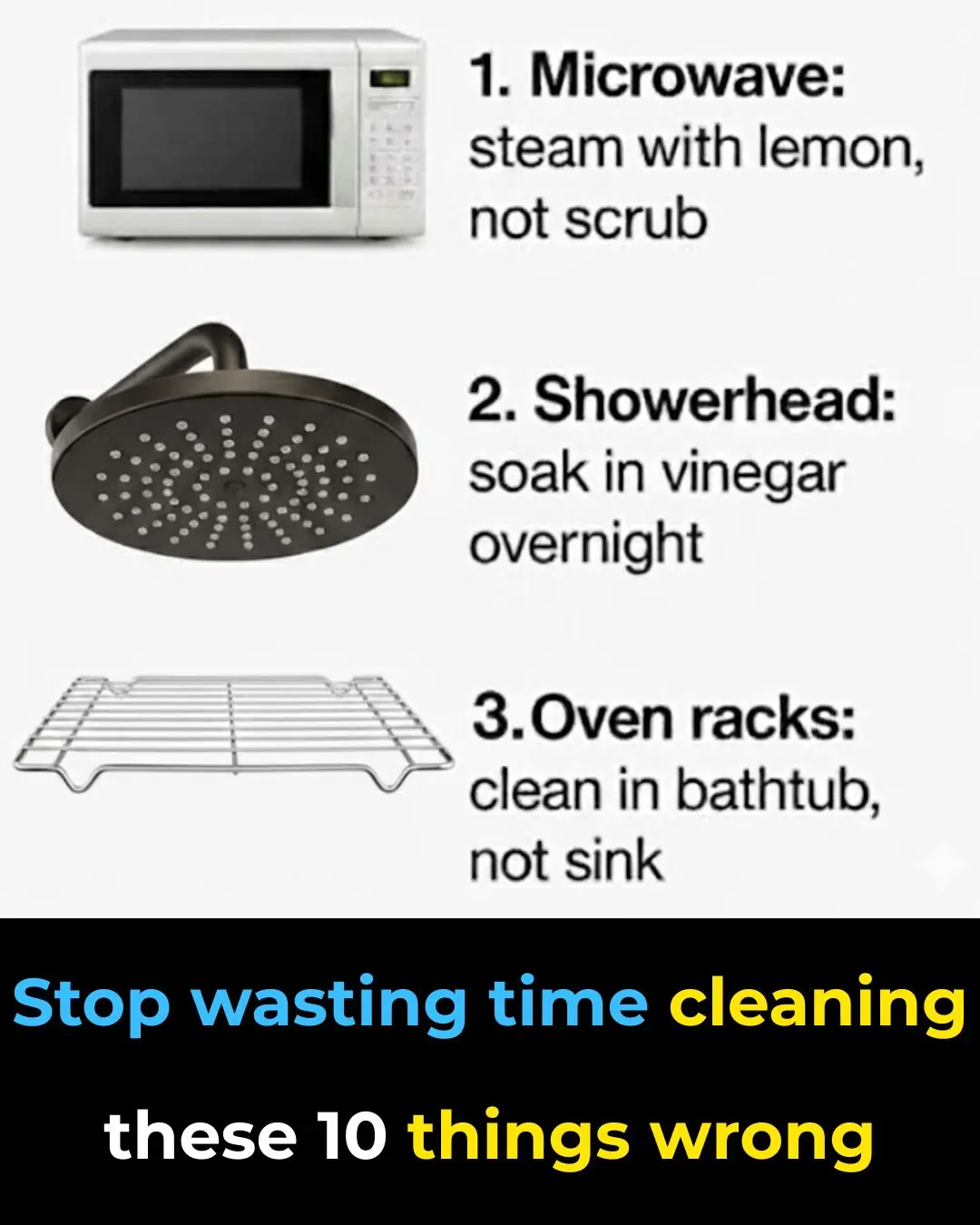
Most do this wrong. 10 laundry habits you’re doing wrong
Laundry is one of those everyday chores that we rarely stop to think about. For most people, it’s as simple as tossing clothes into the machine, adding detergent, and pressing “start.” However, there’s actually a science behind proper laundry care. The way you wash, dry, and handle your clothes can dramatically affect their appearance, texture, and lifespan.
Unfortunately, many of us develop bad laundry habits over time—habits that can dull fabrics, damage fibers, or even shorten the life of our washing machines. Below are eleven of the most common laundry mistakes people make and practical ways to fix them for cleaner, fresher, and longer-lasting clothes.
1. Using Too Much Detergent
It’s easy to assume that more detergent equals cleaner clothes, but the opposite is often true. Excess detergent creates extra suds that trap dirt and residue, leaving clothes feeling stiff or sticky after washing. Over time, this buildup can also clog your washing machine, leading to unpleasant odors and even mechanical issues.
Most modern high-efficiency (HE) washers are designed to work with much less detergent—usually just two tablespoons per full load. Always check the detergent label and measure carefully. If you live in a hard-water area, consider adding a small amount of baking soda to boost cleaning power instead of more soap.
2. Washing Towels with Clothes
Towels are bulky and highly absorbent, which means they soak up a lot of water and detergent. When washed with clothes, they can create friction that causes pilling, stretching, and general wear. Towels also shed lint that sticks to other fabrics—especially darker or synthetic ones.
To avoid these issues, wash towels separately using a warm or hot cycle. You can also add a bit of vinegar to help maintain softness and reduce detergent residue.
3. Leaving Wet Laundry in the Machine
Forgetting your wet laundry in the washer for hours—or even overnight—is one of the quickest ways to develop musty odors. In just 8–12 hours, damp clothes can start to grow mold and mildew.
If you often forget, try setting a phone reminder or using your washer’s mobile alert feature (if it has one). And if your clothes already smell sour, rewash them with a cup of white vinegar and a half-cup of baking soda to neutralize the odor and freshen the fabrics.
4. Adding Fabric Softener to Workout Clothes
Fabric softeners might make clothes feel smooth and smell great, but they’re a poor choice for moisture-wicking or performance fabrics. The coating left by softeners blocks the breathable fibers that pull sweat away from your skin, reducing their effectiveness.
Instead, pour a half-cup of white vinegar into the rinse cycle—it naturally softens clothes, helps eliminate odor, and keeps performance wear functioning as intended.
5. Overloading the Washing Machine
Stuffing your washer to the brim doesn’t save time—it prevents your clothes from being cleaned properly. Without enough room to move around, water and detergent can’t circulate, resulting in uneven washing and lingering dirt.
As a rule of thumb, leave about a hand’s width of space between the top of the drum and your clothes. For bulky items like bedding or coats, consider doing smaller loads or using a laundromat’s industrial machines for better results.
6. Ignoring Care Labels on Clothing
Care labels aren’t just there for decoration—they contain essential information on washing temperature, drying methods, and ironing recommendations. Ignoring them can lead to shrinking, fading, or even destroying your favorite garments.
Take a moment before washing new clothes to read the tag. Sort delicates, wool, or “hand wash only” items separately. When in doubt, use a gentle cycle with cold water to stay safe.
7. Using the Wrong Water Temperature
Temperature matters more than you might think. Hot water kills bacteria and removes oil-based stains but can shrink or fade fabrics. Cold water is energy-efficient and gentle but might not clean heavily soiled clothes as well.
A good middle ground is warm water—it provides cleaning power without being too harsh. You can also separate laundry by type: use hot for towels and bedding, warm for everyday wear, and cold for delicates or bright colors.
8. Not Sorting Laundry Properly
Mixing light and dark clothes is a recipe for color bleeding disasters. Similarly, washing jeans with lightweight blouses can cause damage due to friction.
Always sort your laundry by color (whites, lights, darks) and by fabric weight. You’ll notice your clothes staying brighter, smoother, and looking newer for longer.
9. Skipping the Pre-Treatment of Stains
Once a stain sets, it becomes much harder to remove. Whether it’s coffee, wine, or grass, quick action makes all the difference.
Before washing, dab a bit of liquid detergent or stain remover directly on the spot and let it sit for at least 5–10 minutes. For tougher stains, gently scrub with a soft brush or use a mix of vinegar and baking soda for a natural alternative.
10. Not Cleaning the Washing Machine Regularly
Your washing machine also needs washing! Over time, detergent residue, dirt, and bacteria accumulate inside the drum and hoses, causing bad smells and reducing cleaning efficiency.
Run an empty cycle once a month with two cups of white vinegar and hot water, followed by a rinse cycle with baking soda. Wipe down the rubber seal and detergent drawer afterward to prevent mildew growth.
11. Using the Dryer for All Fabrics
The dryer may be convenient, but excessive heat can shrink, fade, or weaken many fabrics—especially delicates, wool, and items with elastic.
Check clothing tags carefully, and air-dry anything labeled “line dry” or “dry flat.” A drying rack placed near a sunny window can be just as effective, and it’s gentler on both your clothes and the environment.
Final Thoughts
Mastering good laundry habits doesn’t just make your clothes look and smell better—it saves money, conserves energy, and extends the lifespan of your wardrobe. With just a few small changes, you can elevate laundry day from a mindless chore to an easy routine that keeps your garments in top shape.
News in the same category


You're doing it all wrong. Here’s the right way to store tomatoes

You’re doing it all wrong. Here’s the right way to vacuum carpets

Most do this wrong. 10 plants you’re watering too often

Most don’t know. 12 brilliant ways to use WD-40 around the house

When frying lolot leaf patties, remember to take an extra step so the patties turn out fragrant, bright green, and not darkened.

5 breakfast dishes that boost liver and kidney function, tasty, nutritious, affordable, and very easy to make

The plant that DOG FLUKE AND CAT WORM see is scary, destroy the helminth larvae, people

Revealed: Tips to clean tiles to shine at home without spending a dime

If you don't want your electricity bill to skyrocket, take action immediately to prevent your freezer from frosting over

How to Quickly Remove Spider Webs from the Ceiling Without Sweeping Up Dust

Don’t Be Too Quick to Throw Away Rotten Tomatoes – The More Rotten They Are, the More Useful They Become! Few People Know This Trick

Clogged Toilet? Try This Simple Trick — Within 5 Minutes, the Water Flows Smoothly Again

Wow, I never knew this!

Stop throwing out old plastic food containers. Here’s 10 brilliant hacks to use them around the house

Put borax on wax paper and slide it under fridge. Here's why

Stop wasting time cleaning these 10 things wrong

No way, I was so out of the loop here

Take meat from the freezer that is as stiff as bricks

Put an orange next to your bed, your health will improve unexpectedly
News Post

Garlic & Cloves: The Natural Remedy for Varicose Veins and Circulation

Here’s Why Many Couples Start Sleeping In Separate Beds After 50

5 foods that heal your body and STARVE cancer—eat these now!

Conveniently keep these 3 things under the bed, no wonder the family is in chaos, has many difficulties, and still works hard

Stop ruining leftovers with these 10 mistakes

You're doing it all wrong. Here’s the right way to store tomatoes

Diagnosed With Terminal Cancer That Spread to Her Brain, the Woman Broke Down in Tears After Learning the “Culprit” Came From Her Own Family

The Impressive Health Benefits of Guava Fruit and Leaves & How to Eat Guava (Evidence Based)

Do You Wake Up With Numb or Tingling Hands? Here's What Your Body Is Trying to Tell You

5 Phrases That Indicate a Man is About to Leave His Wife for Another Woman

You’re doing it all wrong. Here’s the right way to vacuum carpets

Can You Find The Missing Girl in the Wilderness

How to Control Blood Sugar Levels with a Boiled Egg

Why You Keep Your Room Messy According to Psychology

I started adding chia seeds to my breakfast every day — and within a week, I noticed some surprising changes

Most do this wrong. 10 plants you’re watering too often

Most don’t know. 12 brilliant ways to use WD-40 around the house

When frying lolot leaf patties, remember to take an extra step so the patties turn out fragrant, bright green, and not darkened.

4 powerful vitamins that help protect you from cancer—start today!
